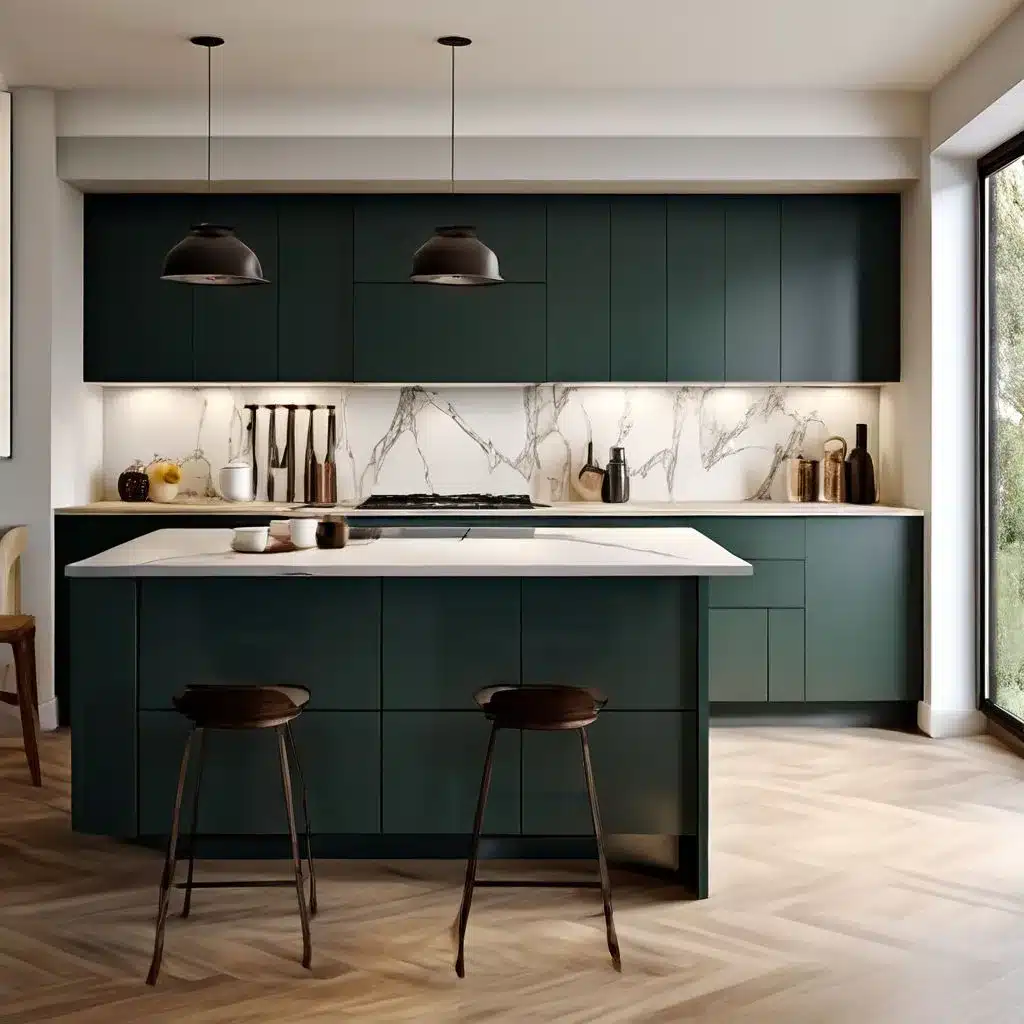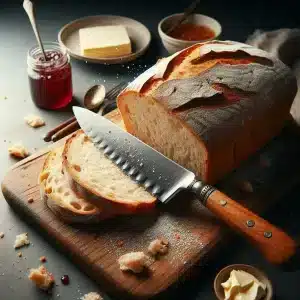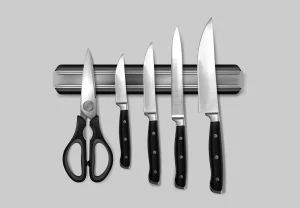How to organize utensils in kitchen cabinets?
It’s the question we all ask ourselves when we want to give our kitchen a better look.
That’s why maximizing space with style becomes a priority in cluttered kitchens, leading us to evaluate our storage needs and consider kitchen organizers. By focusing on shelving, baskets and kitchen cabinet organizers, we ensure that everything is in its place, improving both functionality and aesthetics.
This guide offers kitchen organizer ideas, guiding you through the process of emptying, cleaning and organizing cabinets by zones. It lays the foundation for a systematically organized kitchen where efficiency and style coexist seamlessly.
How to organize utensils in kitchen cabinets?
By using clever organizers, you can optimize your kitchen space without compromising its style. Let’s dive in and transform your kitchen into a functional and stylish space that makes cooking a joy.
Assessing Your Kitchen Storage Needs
Zone and Plan Your Space
- Identify Functional Zones: Begin by zoning your kitchen for specific purposes. For example, create a coffee station, a kids’ station, a smoothie station, and a household management binder area. This helps in determining what items will be stored and where they should be located for maximum efficiency.
- Item Placement Strategy: Place frequently used items like plates, bowls, and glasses in the most convenient locations. This might mean keeping them near the dishwasher or stove to streamline meal preparation and cleanup.
Inventory and Storage Calculation
- Conduct a Detailed Inventory: List all kitchen items, including small appliances, utensils, pots, and pans. This step is crucial for understanding what needs to be stored and helps in planning the space required.
- Calculate Storage Needs: Use the formula for calculating total frontage (cabinet width x depth x number of shelves/drawers). This will help in determining if your current storage is sufficient or if additional solutions are needed.
Consider Future and Current Needs
- Evaluate Current and Future Needs: Assess both your immediate and future household needs, considering factors like cooking frequency, kitchen activities, and storage for awkward kitchen areas.
- Optimize for Efficiency: Choose kitchen organizers that not only fit your space but also enhance the functionality. Consider the ease of access, the frequency of use, and the aesthetics of storage solutions.
Organizational Layout and Design
- Design for Accessibility and Aesthetics: Ensure that storage solutions are not only functional but also visually appealing. This includes selecting the right type of cabinets and organizers that complement your kitchen’s decor.
- Professional Consultation: For complex needs, consider consulting with a kitchen designer who can provide expert advice tailored to your specific requirements.
By methodically assessing your kitchen storage needs, you can create a more organized and functional space that catifies both your aesthetic and practical needs.
Categorizing and Purging Kitchen Utensils
Sort and Categorize
- Remove All Utensils: Start by taking every utensil out of drawers and cabinets. Lay them out where you can see them clearly, which will make sorting easier.
- Create Categories: Sort items into four categories: Keep, Recycle, Donate, and Return to Proper Spot. Use boxes or baskets to separate these groups physically.
Evaluate and Purge
- Assess Each Item: Check for duplicates, broken items, or those with missing parts. Discard or plan to replace these as necessary.
- Group by Function: Arrange utensils by their use—cutting, serving, cooking, baking, and measuring. This makes it easier to decide what you need and what you can let go of.
- Consider Material: Group items by material such as stainless steel, silicone, glass, wood, and plastic. This can influence where and how they should be stored.
Organize for Accessibility
- Frequency of Use: Place daily use items within easy reach, while less frequently used items can go on higher shelves or in less accessible cabinets.
- Use Organizers: Implement drawer organizers for small items, hang frequently used tools like spatulas or whisks on hooks, and consider a Lazy Susan for corner cabinets to improve accessibility.
Regular Maintenance
- Declutter Regularly: Make it a habit to review and declutter kitchen utensils periodically. This prevents accumulation and keeps your kitchen functional.
- Reassess Needs: As your cooking habits change, so might your needs for certain utensils. Be willing to adapt your organization system.
By following these steps, you can ensure your kitchen remains a clutter-free and efficient space, making cooking and meal preparation easier and more enjoyable.
Implementing Storage Solutions and Organizers
Customizing Your Storage Solutions
- Opt for Custom Cabinets: Consider investing in custom and ultracraft cabinets from iCabinetry Direct for a tailored storage solution that meets your specific kitchen needs.
- Utilize Vertical Space: Install racks or hooks to make the most of vertical space, ideal for hanging utensils, pots, and pans.
- Implement Pull-Out Shelves: These shelves are fantastic for accessing items stored at the back of your cabinets, making everything easily reachable.
Enhancing Cabinet Organization
- Use Dividers for Lids and Pans: Employ dividers in your drawers to organize lids and stack pots and pans neatly.
- Install Lazy Susans: Place a Lazy Susan in corner cabinets or on countertops to rotate supplies, making them accessible with a simple spin.
- Add Organizing Tools: Incorporate additional tools like storage bins and baskets to keep smaller items organized.
Maximizing Fridge and Pantry Efficiency
- Upgrade Your Fridge: Consider a fridge upgrade for better organization and energy efficiency, including features like adjustable shelves and multiple drawers.
- Create a Pantry Drawer: Transform a cabinet drawer into a pantry with containers to categorize and organize dry goods and other essentials.
- Label Everything: Use a label maker to clearly mark containers, making it easier to find what you need quickly.
Utilizing Innovative Accessories
- Install Under-Cabinet Wine Glass Racks: These racks offer a stylish solution for storing and accessing your stemware.
- Magnetic Hooks and Knife Strips: Use magnetic hooks on the fridge for towels or oven mitts and magnetic knife strips for easy access to kitchen knives.
- Implement a Pull-Out Cutting Board: This adds a convenient prep area that tucks away when not in use.
By integrating these storage solutions and organizers, you can significantly enhance the functionality and aesthetics of your kitchen, making it a more enjoyable and efficient space.
Maintaining Your Organized Cabinets
Regular Decluttering and Adjustment
- Regularly Declutter: Make it a routine to go through your kitchen cabinets every few months to remove items that are no longer needed or used.
- Adjust and Adapt: As your needs and kitchen tools change, adjust your organizational systems to accommodate new items or remove unused ones.
Effective Labeling System
- Label Shelves: Clearly label shelves and storage areas to guide other users in your household. This maintains order and ensures everyone knows where items belong.
- Update Labels: Update labels as needed when you introduce new items or change the layout of your kitchen storage.
Optimizing Space with Smart Storage Solutions
- Utilize Hooks: Install hooks inside cabinet doors or on unused wall space to hang aprons, oven mitts, or measuring cups.
- Open Storage Solutions: Use dessert stands or lazy Susans on countertops or inside cabinets for easy access to frequently used items.
- Creative Corner Storage: Place vintage wooden crates or small shelving units in underutilized corners for additional storage.
Innovative Use of Available Spaces
- Windowsill Utilization: Use windowsills to store decorative items, small plants, or cookbooks.
- Above Cabinet Storage: Store rarely used or seasonal items on top of cabinets to free up more accessible space.
- Pegboard Installation: Install a pegboard to hang pots, pans, and other frequently used tools for easy accessibility.
Enhancing Accessibility and Visibility
- Convert Shelves to Drawers: Transform cabinet shelves into pull-out drawers to make it easier to reach items at the back.
- Employ Vertical Storage: Use narrow vertical shelves for storing spices, oils, or bottles, which can be placed in any small space available.
Maintaining a Flexible and Efficient Kitchen
- Fold-Down Table: Install a fold-down table that can be used when extra counter space is needed and tucked away afterward.
- Magnetic Storage: Use a magnetic knife rack for knives and add magnetic hooks to the side of your fridge for hanging towels or utensils.
- Utilize Multipurpose Furniture: Add wheels to large appliances or storage units to easily move them around as needed for cleaning or reorganization.
By incorporating these strategies, you can ensure your kitchen remains organized, functional, and adaptable to changing needs and styles.
What are some effective ways to increase storage space in kitchen cabinets?
To maximize your kitchen cabinet space, consider these innovative hacks:
- Install organizers on the inside of cabinet doors.
- Use stackable shelf organizers to create additional levels.
- Choose adjustable shelving to customize storage for different item sizes.
- Hang mugs on hooks to free up shelf space.
- Invest in under-shelf baskets for extra storage.
- Place Lazy Susans in corner cabinets for easy access.
- Organize drawers with dividers.
- Install a pull-out trash can to save floor space.
What are the steps to organizing kitchen cabinets efficiently?
To effectively set up your kitchen cupboards, follow these steps:
- Create a logical layout where items are placed in intuitive locations.
- Utilize easy-to-reach shelves for frequently used items.
- Find solutions for hard-to-reach storage areas to make them more accessible.
- Group items by their purpose.
- Test out your new organization system to ensure it works for you.
- Label shelves to help maintain order.
- Use containers to keep clutter at bay.
- Employ hooks to hang items and save shelf space.
How should I determine the placement of items in my kitchen?
When deciding where to put things in your kitchen, keep cooking and baking tools close to your food preparation area. Store utensils in the nearest drawer to this zone. Position glassware conveniently near the sink or refrigerator. If you enjoy coffee or tea, create a station with all the necessary supplies, including sugar, mugs, and filters, close to your water source.
Conclusion
And that’s as far as we’ve come with this guide to organizing your utensils using cabinets. Remember that the most important thing is to know how to make the most of the space, eliminate unnecessary objects and use a little bit of your imagination. For the rest, organize your utensils to your liking and keeping your style.
And if you need to replace some of the utensils in your kitchen, you can check the list of kitchen utensils we have in our store.
See you in a future guide!





